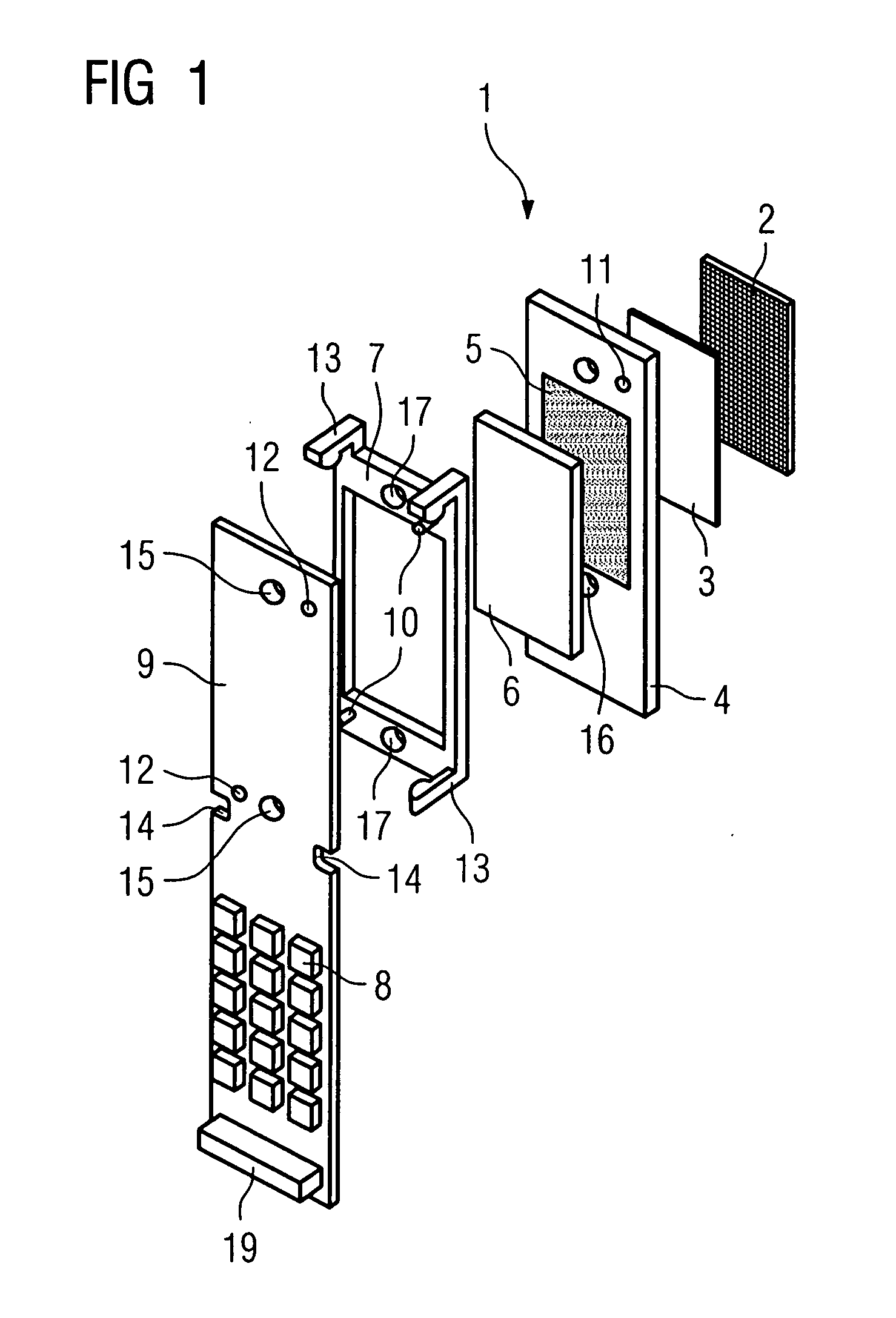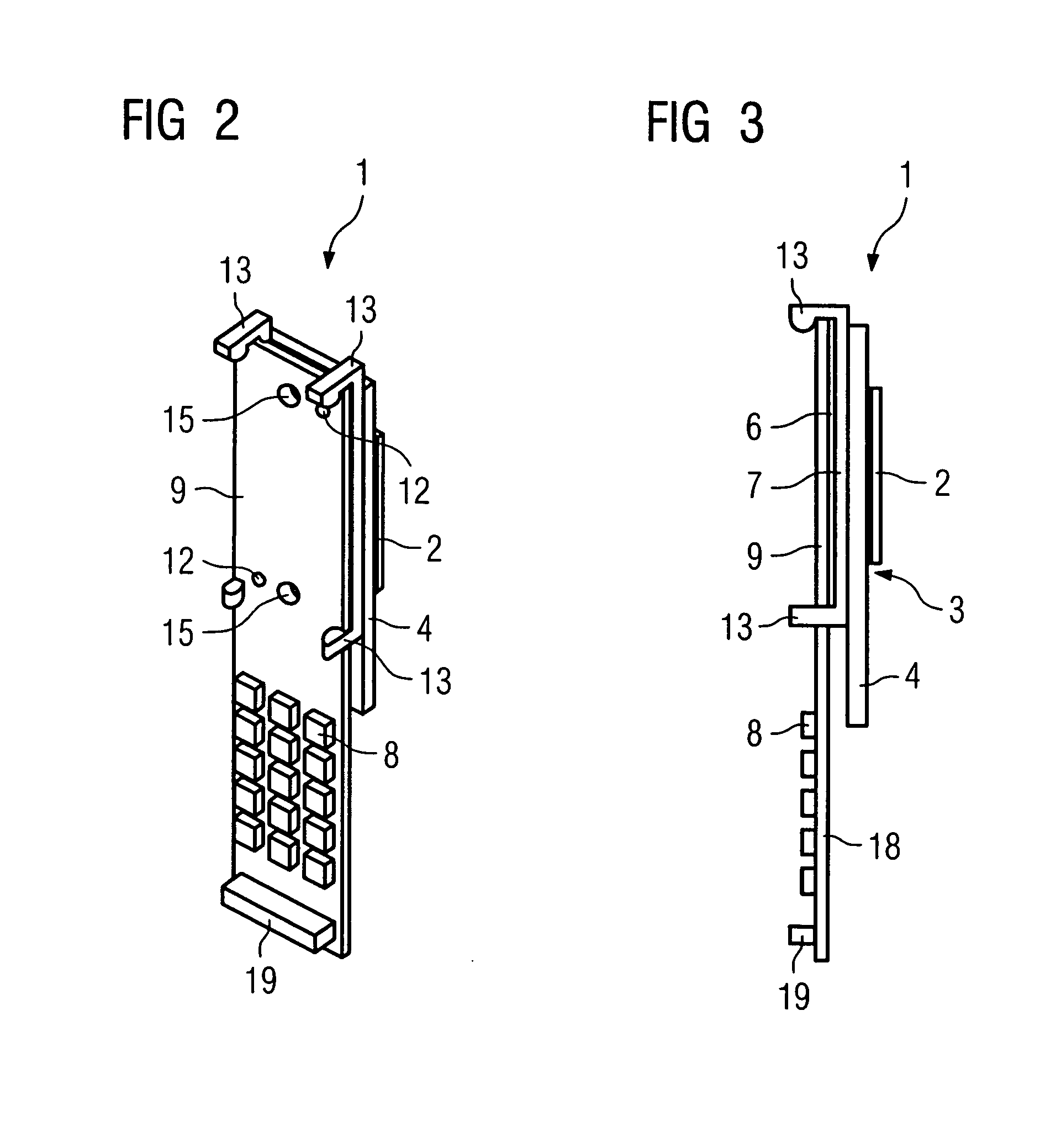Detector module
a technology of detector module and connector housing, which is applied in the field of detector module, can solve the problems of increasing the space requirement of the plug-in connector housing and the relationship, and achieve the effects of reliable electrical connection, improved quality, and improved performan
- Summary
- Abstract
- Description
- Claims
- Application Information
AI Technical Summary
Benefits of technology
Problems solved by technology
Method used
Image
Examples
Embodiment Construction
[0021] FIGS. 1 to 3 show a detector module 1. The detector module 1 has a scintillator arrangement 2 and a photodiode arrangement 3. Each scintillator of the scintillator arrangement 2 and each photodiode of the photodiode arrangement 3, which is assigned to one of the scintillators, together form a detector element. The photodiode arrangement 3 has its active side facing the scintillator arrangement 2. The scintillator arrangement 2 converts incident X-rays into light, which is converted into electrical signals by the photodiode arrangement 3.
[0022] Together with the scintillator arrangement 2 placed on it, the photodiode arrangement 3 is arranged on a module board 4. The module board 4 is provided with a multiplicity of first contact points 5. The number of first contact points 5 corresponds precisely to the number of detector elements, which are electrically connected to the first contact points 5 by way of a through-contact extending through the board.
[0023] An electrical elas...
PUM
 Login to View More
Login to View More Abstract
Description
Claims
Application Information
 Login to View More
Login to View More - R&D
- Intellectual Property
- Life Sciences
- Materials
- Tech Scout
- Unparalleled Data Quality
- Higher Quality Content
- 60% Fewer Hallucinations
Browse by: Latest US Patents, China's latest patents, Technical Efficacy Thesaurus, Application Domain, Technology Topic, Popular Technical Reports.
© 2025 PatSnap. All rights reserved.Legal|Privacy policy|Modern Slavery Act Transparency Statement|Sitemap|About US| Contact US: help@patsnap.com



